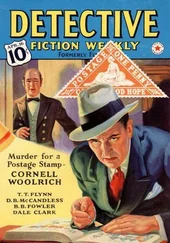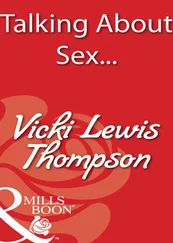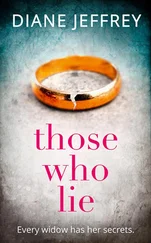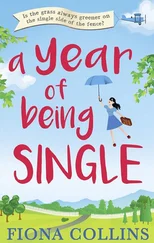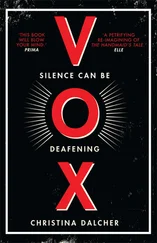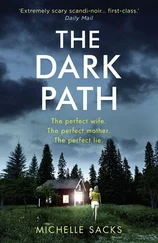One strand of the tangled skein of detective fiction goes back to the eighteenth century and includes the gothic tales of horror written by Ann Radcliffe and Matthew “Monk” Lewis. Those gothic novelists were chiefly concerned to enthral readers with tales of terror and the horrific plight of the heroine, and although these books embodied puzzles and riddles, they were concerned far more with horror than with mystery. We recall the scene in Jane Austen’s Northanger Abbey where the heroine, Catherine Morland, and her friend Isabella meet to discuss their current reading. Isabella says:
“I will read you their names directly; here they are, in my pocket-book. Castle of Wolfenbach, Clermont, Mysterious Warnings, Necromancer of the Black Forest, Midnight Bell, Orphan of the Rhine, and Horrid Mysteries. Those will last us some time.”
“Yes, pretty well; but are they all horrid, are you sure they are all horrid?”
They were indeed, but since the detective story deals with rational terror, their influence on the later development of the genre has been limited, although there are echoes of half-supernatural terror in some of Conan Doyle’s stories. Some critics might argue that horror plays a far greater part than ratiocination in the modern psychological mysteries which deal primarily with atrocious serial murders by psychopaths. The most effective are those by writers with personal involvement in the investigation of serial murder, the Americans Patricia Cornwell and Kathy Reichs and, in this country, Val McDermid, whose central character, Tony Hill, is a psychological profiler, and whose novels show evidence of the careful research necessary both for mood and for credibility. These novels, which are becoming increasingly popular, could be said to constitute a separate genre in crime fiction as they do in films.
If we are looking for the origins of detective fiction, most critics are agreed that the two novelists who vie for the distinction of writing the first full-length classical detective story are William Godwin, Shelley’s father-in-law, who in 1794 published Caleb Williams , and Wilkie Collins, whose best-known novel, The Moonstone , appeared in 1868. Neither writer would have been gratified at this posthumous distinction. Wilkie Collins in particular saw himself as a mainstream novelist, albeit one who worked within the category which Victorians described as sensational. These works of mystery, suspense and danger with an overlay of horror had an increasingly strong hold on the popular imagination, and there was much argument among critics, both about their literary merit and about their social desirability. Did these sensational outpourings even deserve the name of novel, or were they a new and inferior form of fiction provided to meet a rapacious public demand focused on W. H. Smith railway station bookstalls? This debate has, of course, continued, but in the mid-nineteenth century it was a new and particular concern. In 1851 The Times complained:
Every addition to the stock [of the bookstalls] was positively made on the assumption that persons of the better class who constitute the larger portion of railway readers lose their accustomed taste the moment they enter the station.
In 1863 a leading review in the Quarterly Review stated:
A class of literature has grown up around us… playing no inconsiderable part in moulding the minds and forming the habits and tastes of its generation; and doing so principally, we had almost said exclusively, by “preaching to the nerves.”… Excitement, and excitement alone, seems to be the great end at which they aim… Various causes have been at work to produce this phenomenon of our literature. Three principal ones may be named as having had a large share in it-periodicals, circulating libraries, and railway bookstalls.
By 1880 Matthew Arnold was describing these novels as “cheap… hideous and ignoble of aspect… tawdry novels which flare in the bookshelves of our railway stations, and which seem designed, as so much else that is produced for the use of our middle-class, for people with a low standard of life.” The unfortunate Mr. W. H. Smith, whose bookstalls did so much to promote reading, had apparently much to answer for.
But in my view the final and accurate words about the controversy were written by Anthony Trollope in his Autobiography , published posthumously in 1883.
A good novel should be both [realistic and sensational], and both in the highest degree… Truth let there be-truth of description, truth of character, human truth as to men and women. If there be such truth, I do not know that a novel can be too sensational.
Trollope was undoubtedly categorised by his contemporaries as a sensational novelist and was here defending his own work, but these words are as true of the sensational novel of today as they were when they were written.
Both Caleb Williams and The Moonstone could be described as sensational. Hazlitt, the theatre critic and essayist (1778-1830), thought that nobody who began Caleb Williams could fail to finish it and that nobody who read it could possibly forget it, yet I have to admit that in adolescence I found it difficult to get through and now have only the vaguest memory of its long and complicated plot. Certainly the novel has at its heart a murder, an amateur detective-Caleb Williams-who tells the story, a pursuit, disguise, clues to the truth of the murder for which two innocent men were hanged, and at the end a deathbed confession. But Godwin was using this dramatic and complicated adventure story to promote his belief in an ideal anarchism and, so far from justifying the rule of law, Caleb Williams was intended to show that to trust in social institutions is to invite betrayal. The novel is important both to English fiction generally and to the history of the detective story because Godwin was the first writer to use what he hoped would be a popular form as propaganda on behalf of the poor and exploited, and in particular to expose the injustice of the legal system. This was not a path followed by writers of the interwar years, who were more interested in puzzling and entertaining their readers than in the defects of contemporary society, and I would argue that, with a very few exceptions, it is mainly the modern detective writers who have set out not only to provide an exciting and credible mystery, but to examine and criticise the world which their characters inhabit. Today, however, this is done with less didacticism and more detachment and subtlety than was shown by William Godwin, and arises from the reality of the characters and their world rather than from any ostensible desire to promote a particular social doctrine.
But if one is to award the distinction of being the first detective story to one single novel, my choice-and I think the choice of many others-would be The Moonstone , which T. S. Eliot described as “the first, the longest and the best” of modern English detective novels. In my view no other single novel of its type more clearly adumbrates what were to become the main characteristics of the genre. The Moonstone is a diamond stolen from an Indian shrine by Colonel John Herncastle, left to his niece Rachel Verrinder and brought to her Yorkshire home to be handed over on her eighteenth birthday by a young solicitor, Franklin Blake. During the night it is stolen, obviously by a member of the household. A London detective, Sergeant Cuff, is called in, but later Franklin Blake takes over the investigation, although he himself is among the suspects. The Moonstone is a complex and brilliantly structured story told in narrative by the different characters involved directly or indirectly in the story. The varied styles, voices and viewpoints not only add variety and interest to the narrative, but are a powerful revelation of character.
Читать дальше

